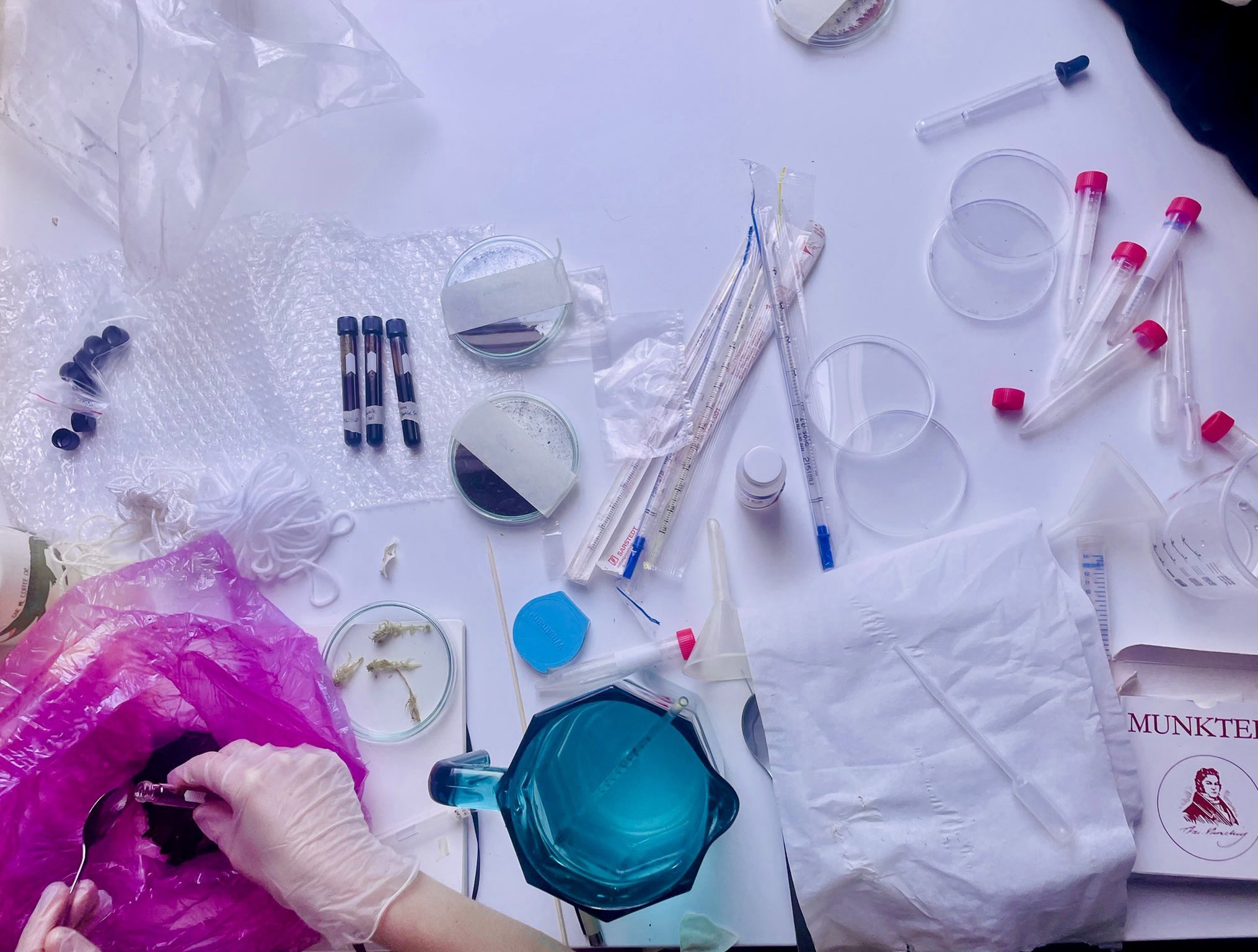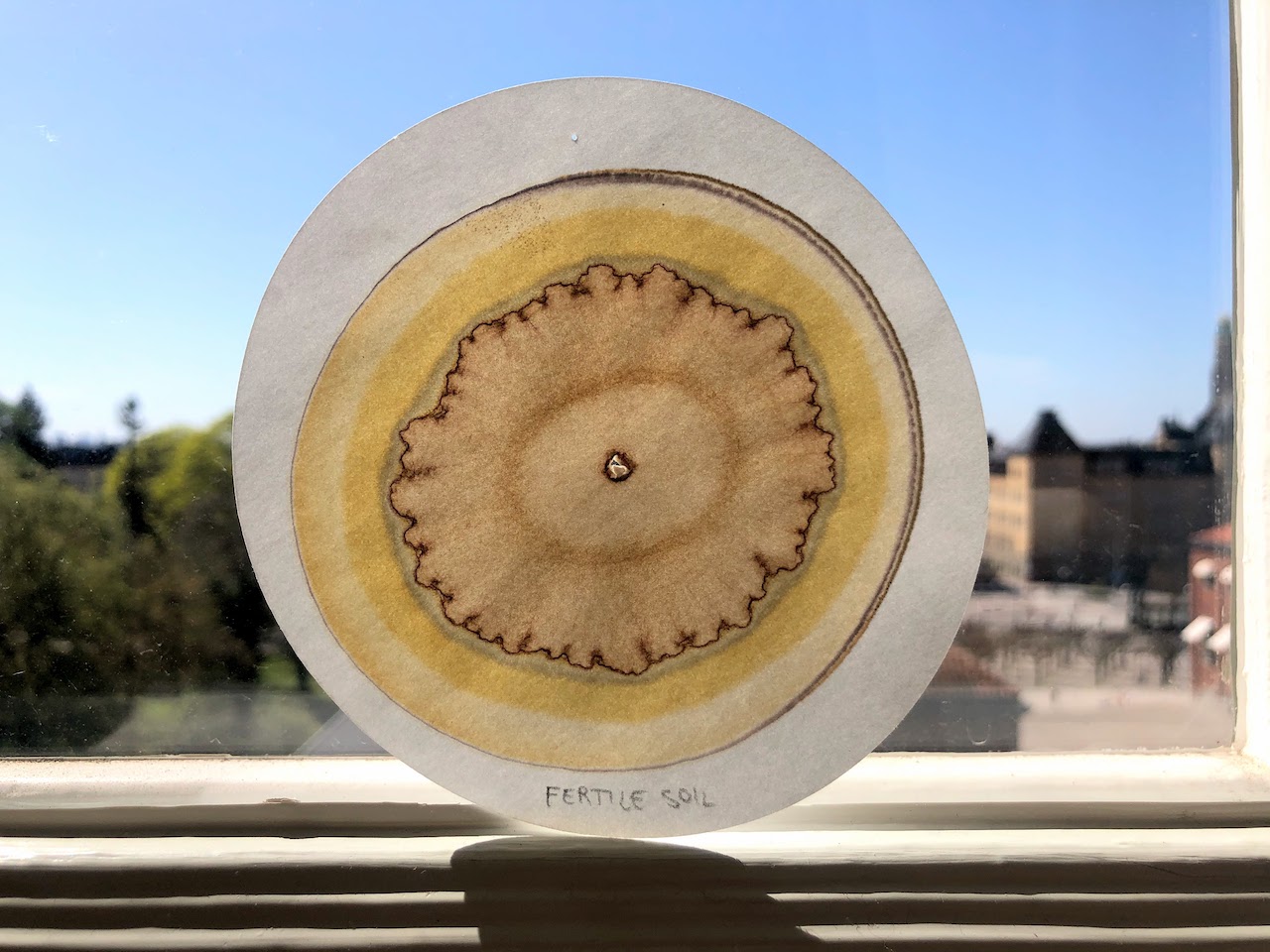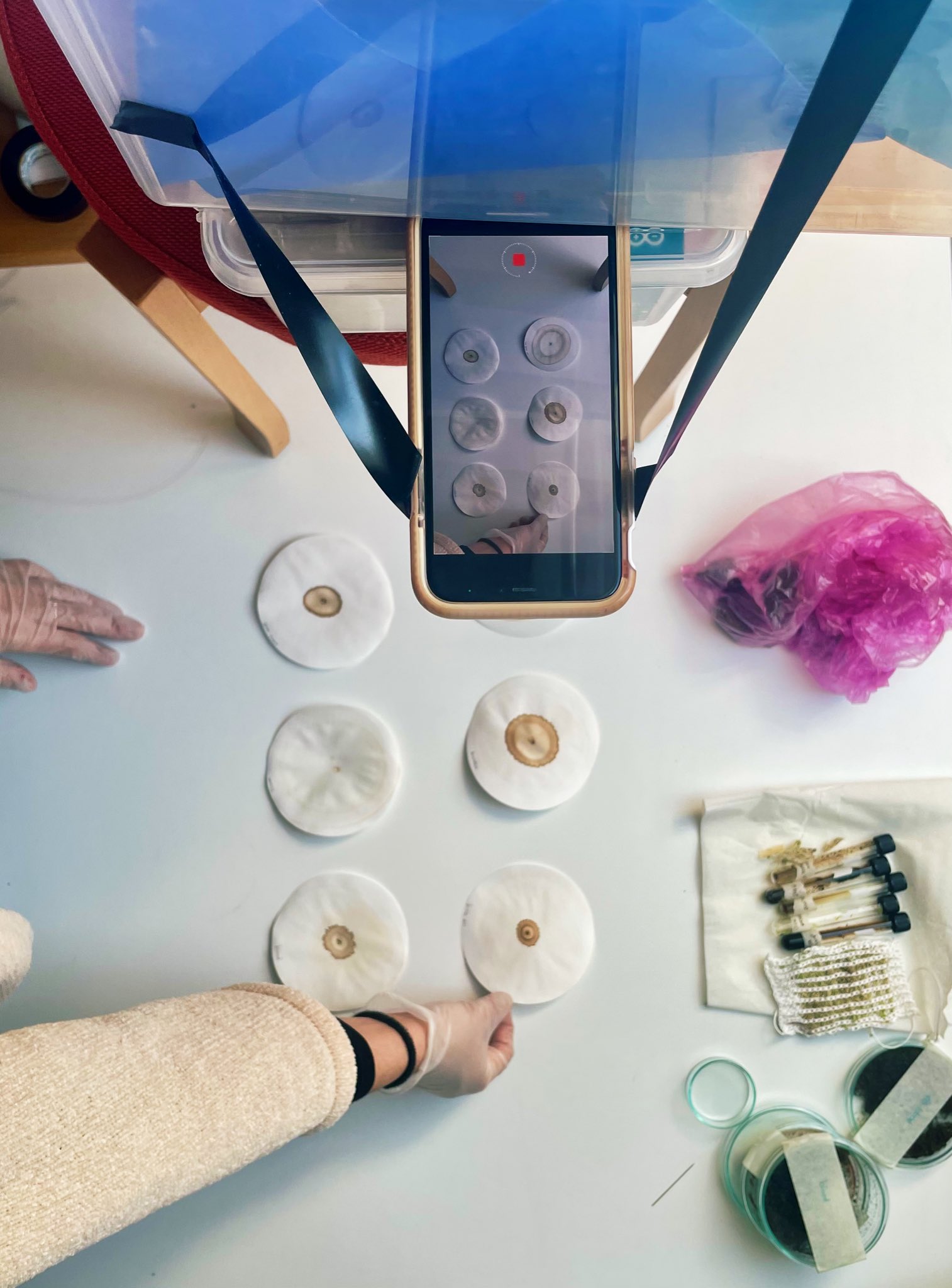Soil chromatography
“I would dip my dumplings in that!” —Marie Louise when seeing one of the samples to test, a (non edible) orange mix of flower petals and sodium hydroxide that resembled sweet and sour sauce.

Soil chromatography is a practice to qualitatively measure the fertility of soil. We invited Anton Poikolainen Rosén, who has been using this technique with urban farmers in Stockholm, to share this process with us and test several samples of soil and organic matter.
Through soil chromatography we can obtain beautiful circle imprints of the different elements in the soil, which sediment at different positions on the paper, creating these radial patterns and rings with different shapes and colors depending on the composition. To create these images, soil samples are prepared in a solution of sodium hydroxide (we used Mr. Muscle drain cleaner) which is applied to circular filter paper that has been previously treated with silver nitrate (a photosentitive compound used in film photography development — attention, this is a toxic and corrosive material!).

In our project, this practice is interesting because it could help us learn about how menstrual blood, along with any other biodegradable menstrual waste, affects the fertility of soil. By comparing two samples of soil, one that has been fertilized, and one that hasn’t, we could determine if one is richer in nutrients than the other.


Comment from Nadia. The figure of the witch is conjured through these experiments: harvesting organic matter as ingredients, finding and crafting the tools, careful measuring, mixing, brewing, respecting and trusting the chemical compounds, and patiently waiting for the magic to happen right before our eyes. The subjective nature of this experiment also echoes the esoteric associations of witchcraft. When reading the chromatographs one must rely on their senses, rather than on precise tools or digital measurements, a bit like palm reading, or interpreting phenomenon that has no universal scientific explanation.
“[…] for the witch was an empiricist: she relied on her senses rather than on faith or doctrine, she believed in trial and error, cause and effect. Her attitude was not religiously passive, but actively inquiring. She trusted her ability to find ways to deal with disease, pregnancy, and childbirth—whether through medications or charms. in short, her magic was the science of her time” —Ehrenreich and English. Witches, midwives, and nurses a history of women.